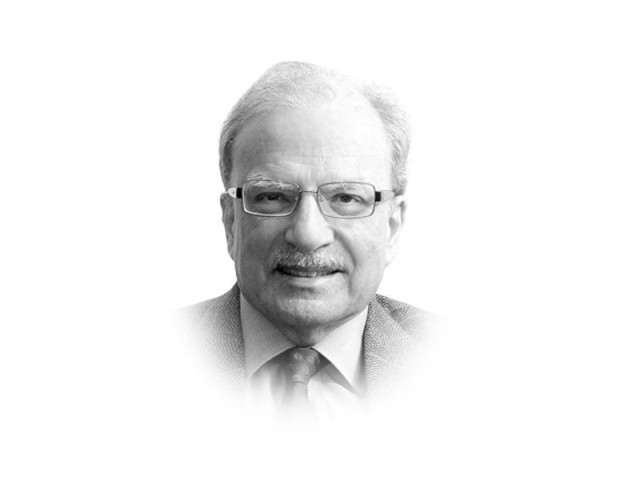
To see what would have been the case had Pakistan been more stable throughout its life as a nation-state, we should first note that in the country’s 70 year history, there were three periods of relative political stability. These were in the 1960s, the 1980s and the early 2000s. During all three, the country was under the rule of the military. And during all three, the rate of economic growth was relatively high. During the period of Ayub Khan (1958-69), the rate of growth was close to 7 per cent a year. When General Ziaul Haq was in charge (1977-88), the rate of GDP increase averaged about 5 per cent. It was about the same when General Pervez Musharraf occupied the presidential seat (1999-2008). It would be correct to draw the conclusion of a positive relationship between political stability and economic growth. It should be possible to do some simple arithmetic on the loss of income that was caused by political instability in the periods in between military rule. However, before doing that calculation, we should point out one more fact about what was made possible by the rule of the military.
During the periods the military governed, Pakistan received large amounts of capital flows from abroad, in particular from the United States. Islamabad then was closely aligned with Washington, pursuing the latter’s strategic interests in the area in which Pakistan was located. Since the military could orient the country’s foreign policy without taking note of public opinion, it did not matter how the citizenry viewed the United States. That, of course, is not possible when politicians are in policy-making positions. Even if Pakistan had been able to achieve political stability without military intervention, without the type of capital flow that would have been possible, the rates of growth may not have been as high as the average during 33 years of military domination of politics. But stability may have resulted in drawing more private capital into the economy. With that as the caveat, let me do some simple arithmetic.
Taking 1960 as the starting point, a sustained rate of growth of 6.5 per cent a year would have meant that the size of the Pakistani GDP would have reached $1.1 trillion rather than the actual $300 billion in 2017. Political stability could have turned Pakistan to a trillion-dollar economy by 2017. In other words, the price the country has paid for political instability can be estimated at $800 billion, more than two and half times the current size of the economy.
This rate of high sustained GDP growth would have most probably lowered the rate of population increase. This has been the experience of most countries; high levels of GDP increase usually result in lowering the rate of fertility. The size of the population in 2017 would have been 180 million rather than 208 million estimate provided by the latest census. This would have meant per capita income of $6,000 rather than $1,450 estimated for 2017. On an average every Pakistani citizen has lost $4,550 of income per year on account of political instability. A heavy price has been paid for political turbulence.
There were other kinds of costs. Two of these are worth identifying. One, sustained high rates of growth would have increased the level of investor confidence in the country. Economists correctly identify confidence as an important determinant of growth. A higher confidence in the economy would have drawn more investment capital from both domestic and foreign financiers. With more private sector resources flowing into the economy, Pakistan’s dependence on external finance would have been reduced. Two, with national and personal incomes at higher levels, the country would have invested more in developing the social sectors of the economy. More resources would have flowed into education and health. Political stability would not only have made an average Pakistani richer but also more educated and healthier.
However, the conclusion to be drawn from this ‘what could have been’ analysis is not that the military needs to get involved to bring about political stability. In fact, the opposite is the case. Pakistan’s political development was not helped but delayed by military interventions. These prevented the country from developing the institutional infrastructure necessary for political progress. What gives me hope for the future is that this delayed development of democracy-supporting institutions may have finally begun to happen. Various components of a working and durable democracy are now asserting themselves, speeding the process of political progress and thus setting the stage for rapid economic advance.
Published in The Express Tribune, September 18th, 2017.
Like Opinion & Editorial on Facebook, follow @ETOpEd on Twitter to receive all updates on all our daily pieces.














COMMENTS
Comments are moderated and generally will be posted if they are on-topic and not abusive.
For more information, please see our Comments FAQ